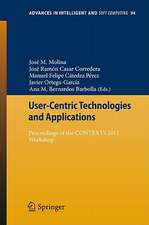Criminal Justice Forecasts of Risk: A Machine Learning Approach: SpringerBriefs in Computer Science
Autor Richard Berken Limba Engleză Paperback – 10 apr 2012
Din seria SpringerBriefs in Computer Science
-
 Preț: 475.83 lei
Preț: 475.83 lei - 20%
 Preț: 166.97 lei
Preț: 166.97 lei - 20%
 Preț: 325.63 lei
Preț: 325.63 lei - 20%
 Preț: 349.15 lei
Preț: 349.15 lei - 20%
 Preț: 302.49 lei
Preț: 302.49 lei -
 Preț: 381.81 lei
Preț: 381.81 lei -
 Preț: 446.47 lei
Preț: 446.47 lei - 20%
 Preț: 296.17 lei
Preț: 296.17 lei - 20%
 Preț: 335.66 lei
Preț: 335.66 lei - 20%
 Preț: 463.83 lei
Preț: 463.83 lei - 20%
 Preț: 323.00 lei
Preț: 323.00 lei - 20%
 Preț: 322.35 lei
Preț: 322.35 lei - 20%
 Preț: 321.85 lei
Preț: 321.85 lei - 20%
 Preț: 232.68 lei
Preț: 232.68 lei -
 Preț: 375.45 lei
Preț: 375.45 lei - 20%
 Preț: 323.00 lei
Preț: 323.00 lei - 20%
 Preț: 322.81 lei
Preț: 322.81 lei - 20%
 Preț: 324.17 lei
Preț: 324.17 lei - 20%
 Preț: 323.00 lei
Preț: 323.00 lei - 20%
 Preț: 322.17 lei
Preț: 322.17 lei - 20%
 Preț: 322.50 lei
Preț: 322.50 lei - 20%
 Preț: 323.34 lei
Preț: 323.34 lei - 20%
 Preț: 324.17 lei
Preț: 324.17 lei - 20%
 Preț: 323.46 lei
Preț: 323.46 lei - 20%
 Preț: 322.17 lei
Preț: 322.17 lei - 20%
 Preț: 322.02 lei
Preț: 322.02 lei -
 Preț: 341.50 lei
Preț: 341.50 lei - 20%
 Preț: 324.49 lei
Preț: 324.49 lei -
 Preț: 344.47 lei
Preț: 344.47 lei -
 Preț: 376.80 lei
Preț: 376.80 lei -
 Preț: 377.18 lei
Preț: 377.18 lei - 20%
 Preț: 324.17 lei
Preț: 324.17 lei - 20%
 Preț: 321.32 lei
Preț: 321.32 lei - 20%
 Preț: 322.17 lei
Preț: 322.17 lei - 20%
 Preț: 324.17 lei
Preț: 324.17 lei - 20%
 Preț: 322.02 lei
Preț: 322.02 lei -
 Preț: 374.46 lei
Preț: 374.46 lei - 20%
 Preț: 320.21 lei
Preț: 320.21 lei - 20%
 Preț: 323.34 lei
Preț: 323.34 lei - 20%
 Preț: 324.17 lei
Preț: 324.17 lei - 20%
 Preț: 231.84 lei
Preț: 231.84 lei - 20%
 Preț: 294.97 lei
Preț: 294.97 lei - 20%
 Preț: 322.50 lei
Preț: 322.50 lei - 20%
 Preț: 323.46 lei
Preț: 323.46 lei -
 Preț: 374.08 lei
Preț: 374.08 lei -
 Preț: 408.23 lei
Preț: 408.23 lei - 20%
 Preț: 321.52 lei
Preț: 321.52 lei - 20%
 Preț: 323.34 lei
Preț: 323.34 lei - 20%
 Preț: 323.00 lei
Preț: 323.00 lei
Preț: 352.26 lei
Preț vechi: 440.33 lei
-20% Nou
Puncte Express: 528
Preț estimativ în valută:
67.43€ • 73.26$ • 56.67£
67.43€ • 73.26$ • 56.67£
Carte tipărită la comandă
Livrare economică 21 aprilie-05 mai
Preluare comenzi: 021 569.72.76
Specificații
ISBN-13: 9781461430841
ISBN-10: 1461430844
Pagini: 123
Ilustrații: IX, 115 p. 22 illus., 21 illus. in color.
Dimensiuni: 155 x 235 x 10 mm
Greutate: 0.18 kg
Ediția:2012
Editura: Springer
Colecția Springer
Seria SpringerBriefs in Computer Science
Locul publicării:New York, NY, United States
ISBN-10: 1461430844
Pagini: 123
Ilustrații: IX, 115 p. 22 illus., 21 illus. in color.
Dimensiuni: 155 x 235 x 10 mm
Greutate: 0.18 kg
Ediția:2012
Editura: Springer
Colecția Springer
Seria SpringerBriefs in Computer Science
Locul publicării:New York, NY, United States
Public țintă
ResearchCuprins
Getting Started.- Some Important Background Material.- A Conceptual Introduction to Classification and Forecasting.- A More Formal Treatment of Classification and Forecasting.- Tree-Based Forecasting Methods.- Examples.- Implementation.- Some Concluding Observations About Actuarial Justice and More.- References.
Recenzii
From the reviews:
“Predicting ‘future dangerousness’ has been a hot topic in psychology, sociology, and criminal justice for many years. … The current state of machine learning statistical procedures utilizing very large datasets is presented in a little over 100 interesting pages. The book is aimed at social science graduate students and researchers, and criminal justice data analysts. Anyone interested in the topic will find it a good read. … Clearly, the author is moving our knowledge of this important topic forward.” (Brad Reid, ACM Computing Reviews, October, 2012)
“Predicting ‘future dangerousness’ has been a hot topic in psychology, sociology, and criminal justice for many years. … The current state of machine learning statistical procedures utilizing very large datasets is presented in a little over 100 interesting pages. The book is aimed at social science graduate students and researchers, and criminal justice data analysts. Anyone interested in the topic will find it a good read. … Clearly, the author is moving our knowledge of this important topic forward.” (Brad Reid, ACM Computing Reviews, October, 2012)




























